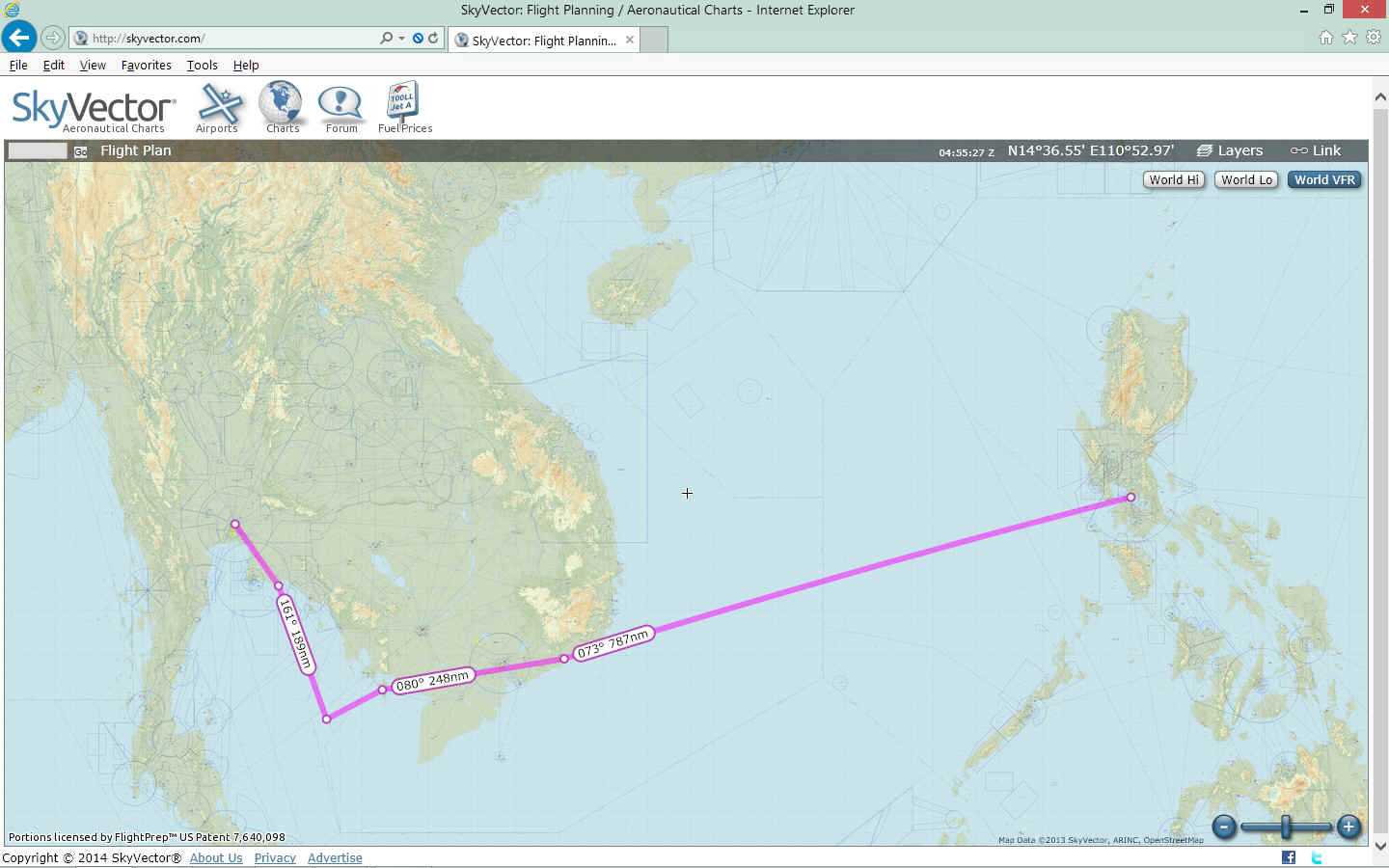
Bangkok to Manila, Philippines and Guam · · PAGE 12.
April 8, 1964: Bangkok to Manila in the Philippine
Islands was via a route that avoided Cambodia, then turned across the southern end of
South Viet Nam before heading out to sea direct to Manila. She commented:
"Somewhere not far away a war was being fought, but from the sky above, all looked
peaceful." She flew this route at 7,500 feet MSL as she did for much of the
trip, except when bad weather required a different altitude. This was the first part
of the trip where she had headwinds as she started across Viet Nam and the South China Sea
toward Manila. She began to wish she had more fuel aboard. Those are the high
points of this leg, now for the details as we start down this page.

The departure from Bangkok was on the 145-degree VOR radial from the
international airport for about 100 nautical miles. This course took Jerrie
southeast to the coast and into the Gulf of Thailand. Along that route she passed
over a small corner of the Gulf near the town of Chon Buri and some low mountains beyond.
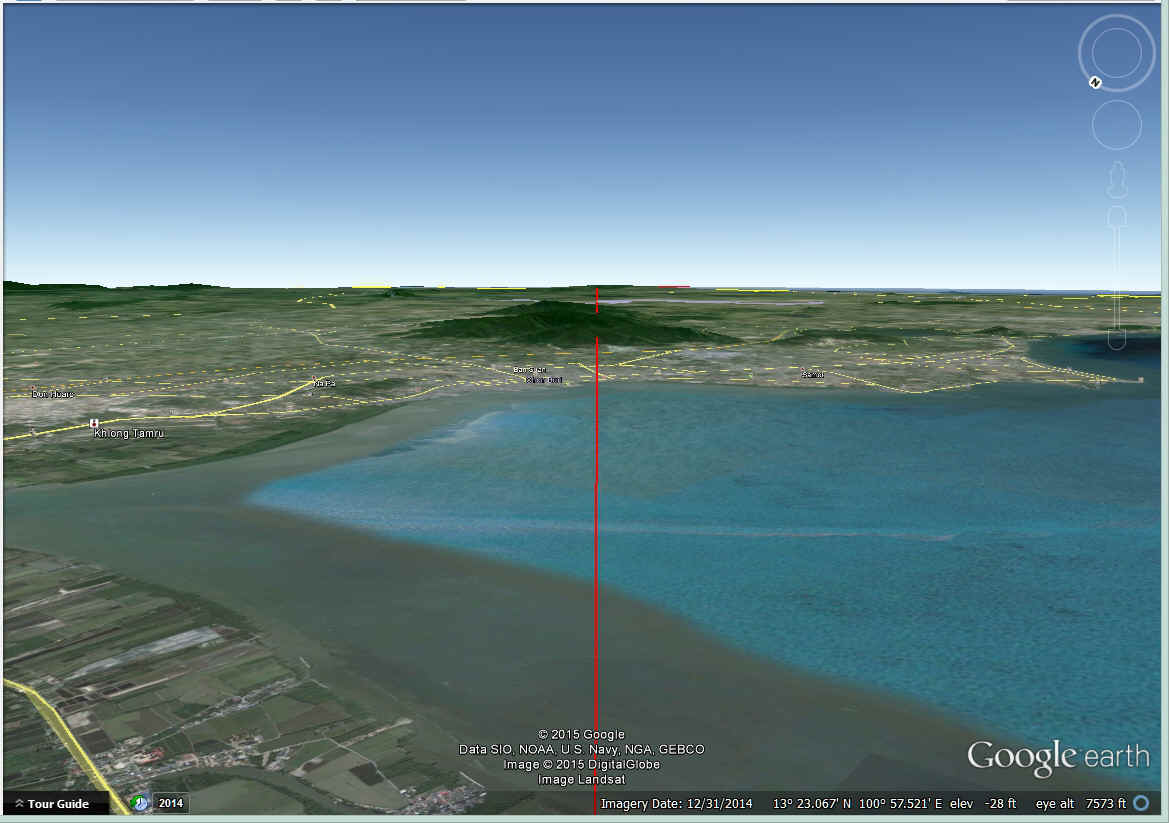
The highest mountains in this part of Thailand along her course are about 3,000
feet above sea level.
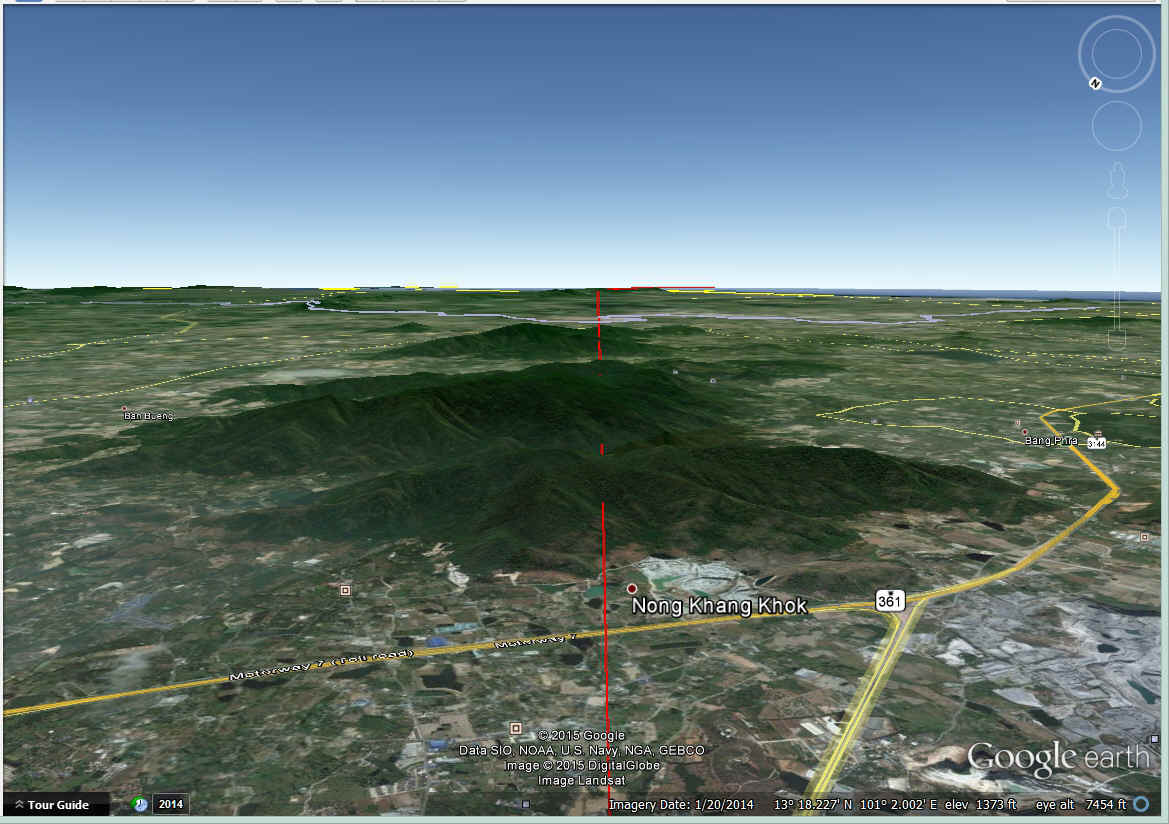
When Jerrie reached her point 100 nautical miles from the Bangkok VOR, she
adjusted her course to about 160 degrees to keep clear of Cambodia for 200 miles while
flying over the Gulf of Thailand.
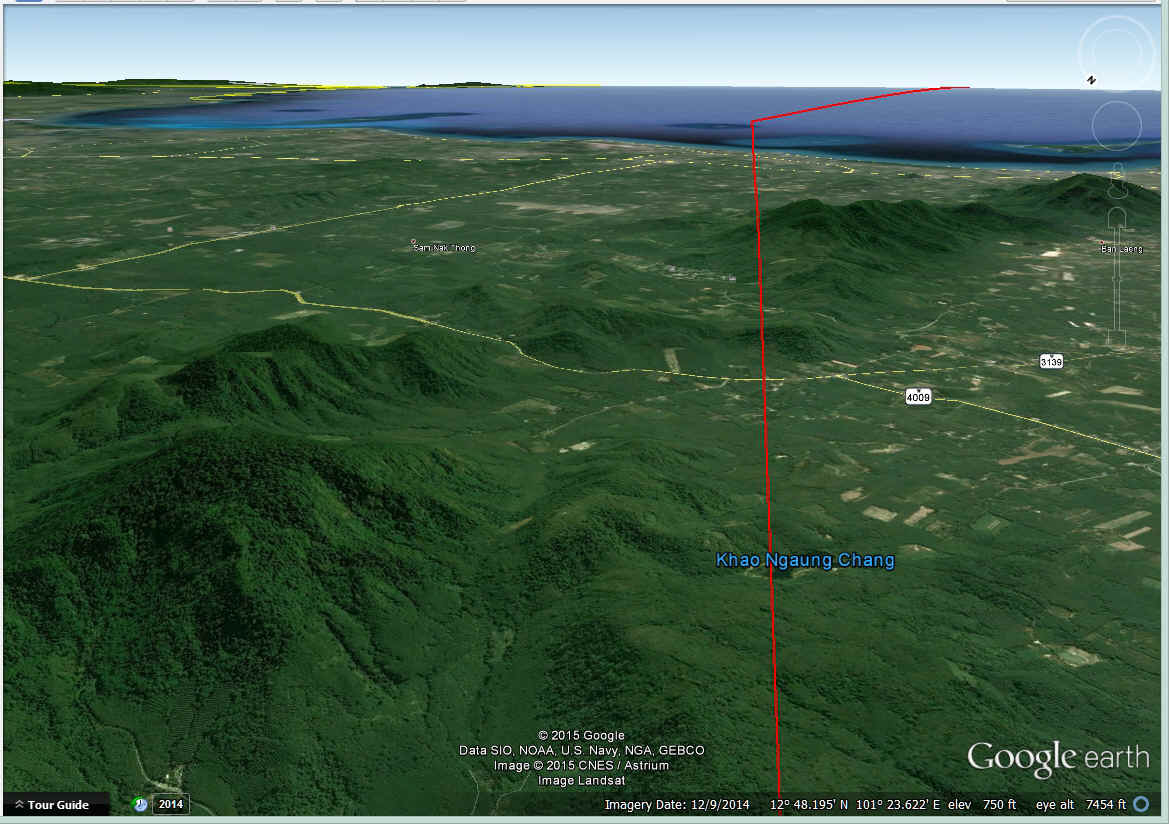
When she was clear of Cambodian airspace, she headed East toward Phu Quoc, a
resort island of South Viet Nam.
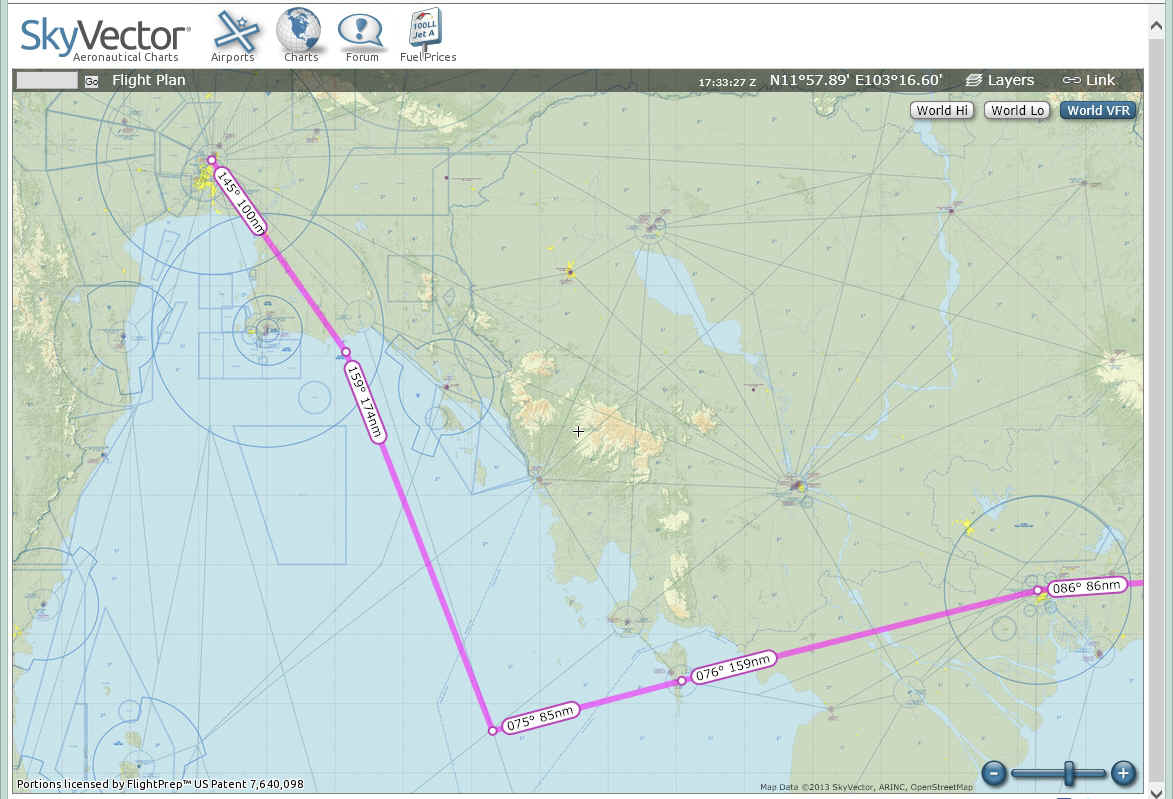
Google Earth provided the tools to measure the distances off shore as Jerrie
flew her course 200 statute miles down the Gulf of Thailand. As she began this part
of the flight, she reviewed her flight plan and the forecast winds aloft. She had a
different route that was expected to be 1,370 miles instead of her first plan that was
estimated to be shorter. The had FIVE hours of extra fuel on board, which would
allow her to fly 11.5 hours instead of her previous estimate of 8.5 hours. She had
headwinds instead of tail winds.
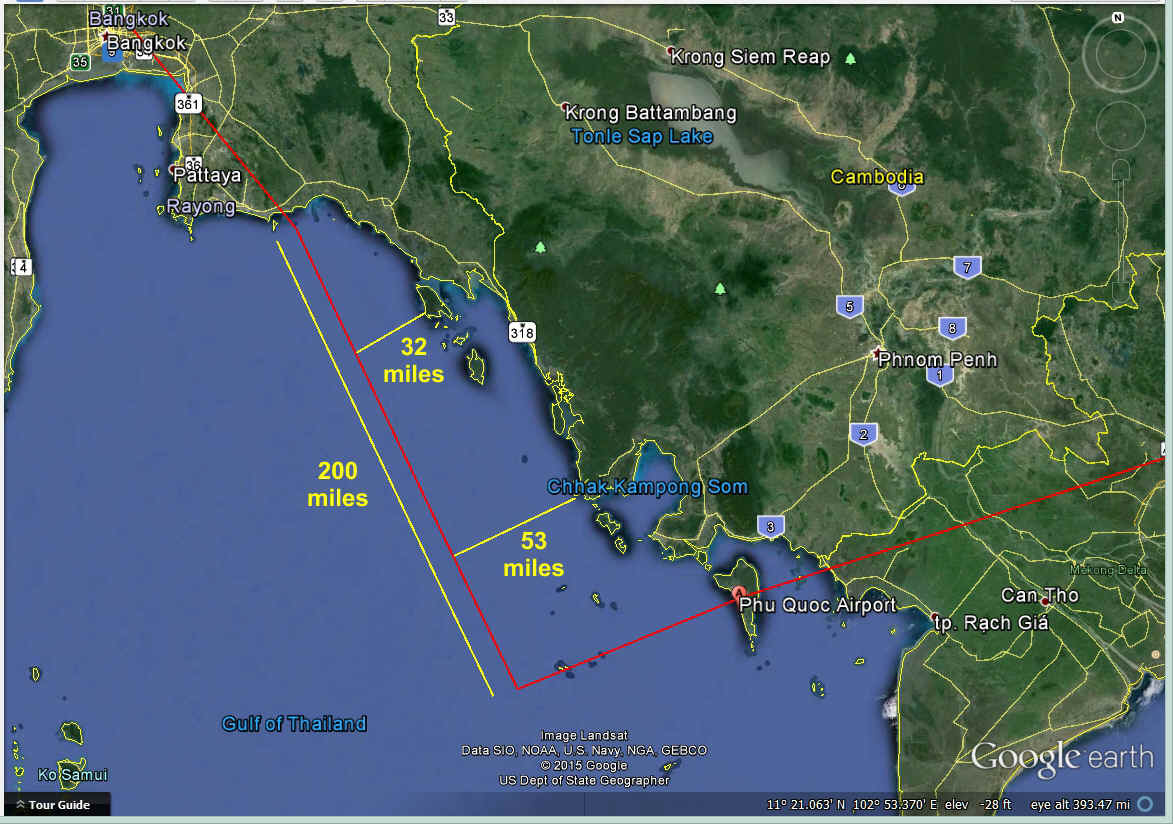
The view here is from 7,500 feet approaching the island of Phu Quoc, Viet Nam.
The mainland is visible here in the distance.
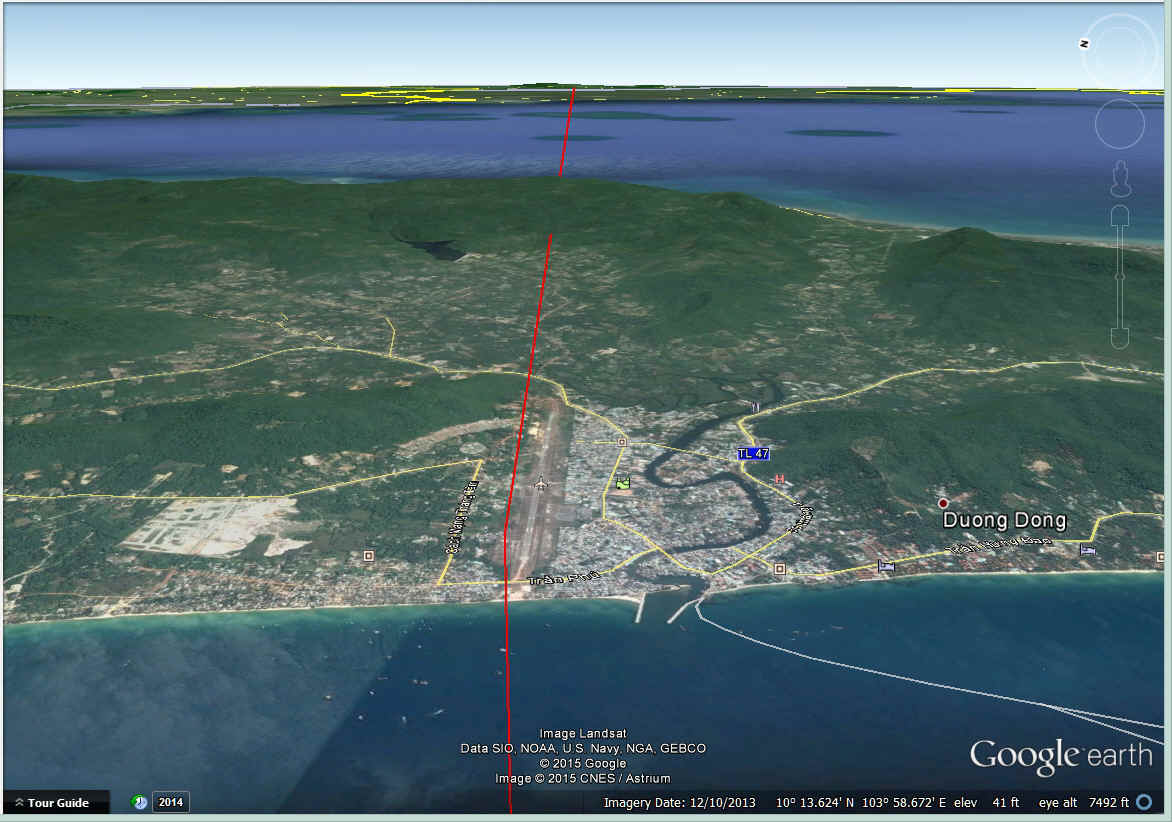
Many of the Asian countries grow plenty of rice and it shows up in aerial
images like this one.
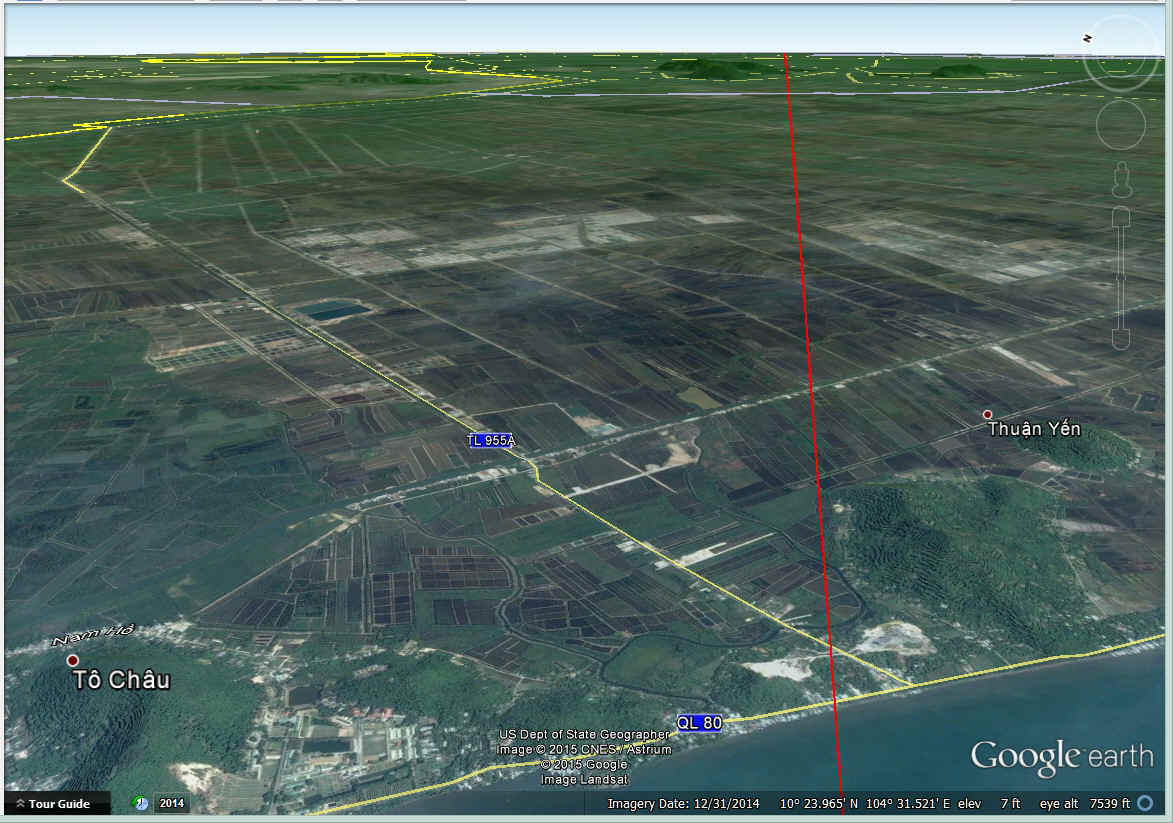
Viet Nam has mountains, but these mountains isolated in a coastal plain got my
attention as I am sure they did for Jerrie when she flew past these peaks that were 2,500
feet and lower.

Saigon was the capitol of South Viet Nam when Jerrie made her flight across the
southern end of the country. Tan Son Nhut airport was a US Air Force Base in 1964.
Today, the employees take bribes and steal items from baggage according to a number
of passenger stories I found online. Jerrie flew past this place at 7,500 feet and
spoke to an American air traffic controller that day.

Phan Thiet is a port town on the South China Sea with many fishing boats based
here. There is a radio beacon there at the mouth of the harbor. Jerrie used it
for navigation on her way out of the country heading for Manila.
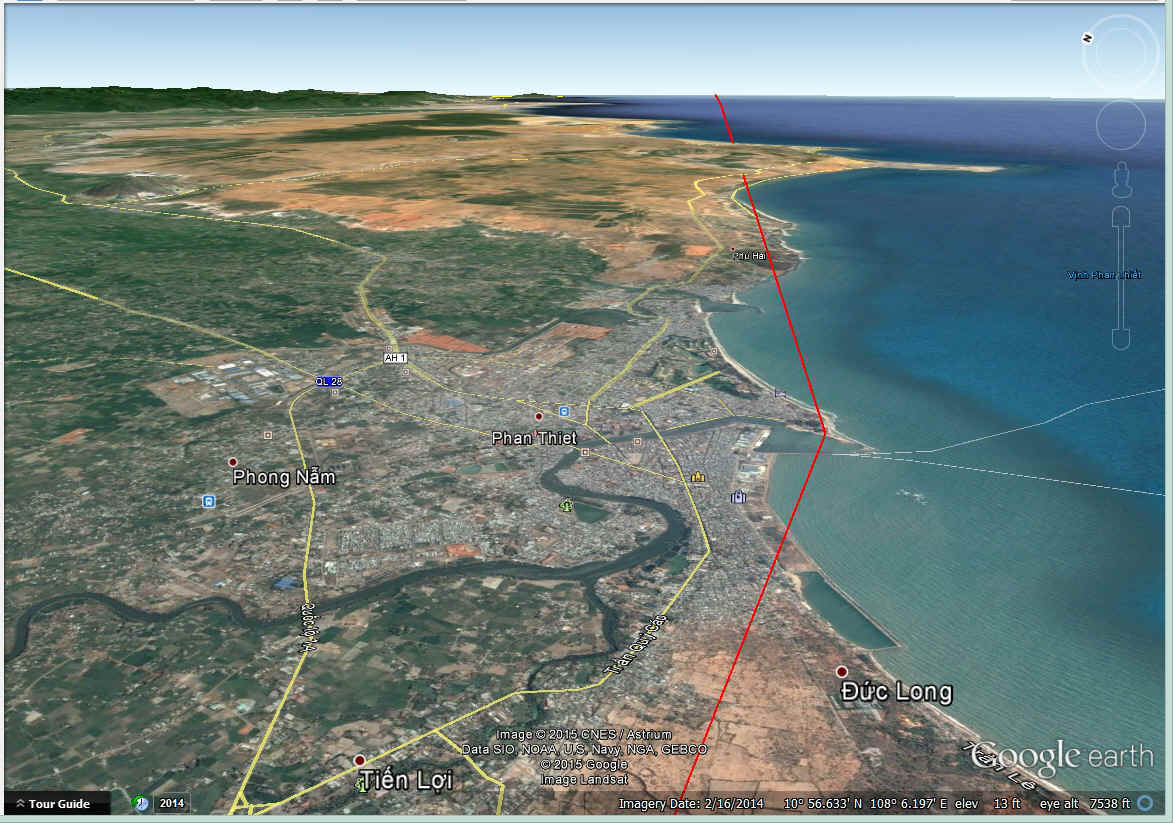
Her route of flight after Phan Thiet was parallel to the coast before heading
out to sea. The mountains in the distance top out a 4,500 feet. It would be
after night fall when she arrives at Manila. A couple of hours of flying out to sea,
the ADF receiver picks up the NDB near Manila from over 600 miles away. She was
watching the cloud formations below and writing some letters as the autopilot kept her on
course. She noticed the engine started to run rough. She pulled the carburetor
heat control and the engine smoothed out. After a few minutes, she pushed the knob
back in and the engine got rough again with the instruments showing a loss of power.
She restored the carb heat setting and started to think about what is going on. It
was too warm outside for carburetor ICE to form, so what could it be? Dirt, it had
to be dirt. She remembered the sand storm in Saudi Arabia, and how her air filter
could be clogged with dirt. The alternate air source was bypassing the filter ahead
of the carburetor, and allowed the engine to run smoother. She knew it would run a
few hours with these settings. The airplane is scheduled for maintenance when she
gets to Manila.
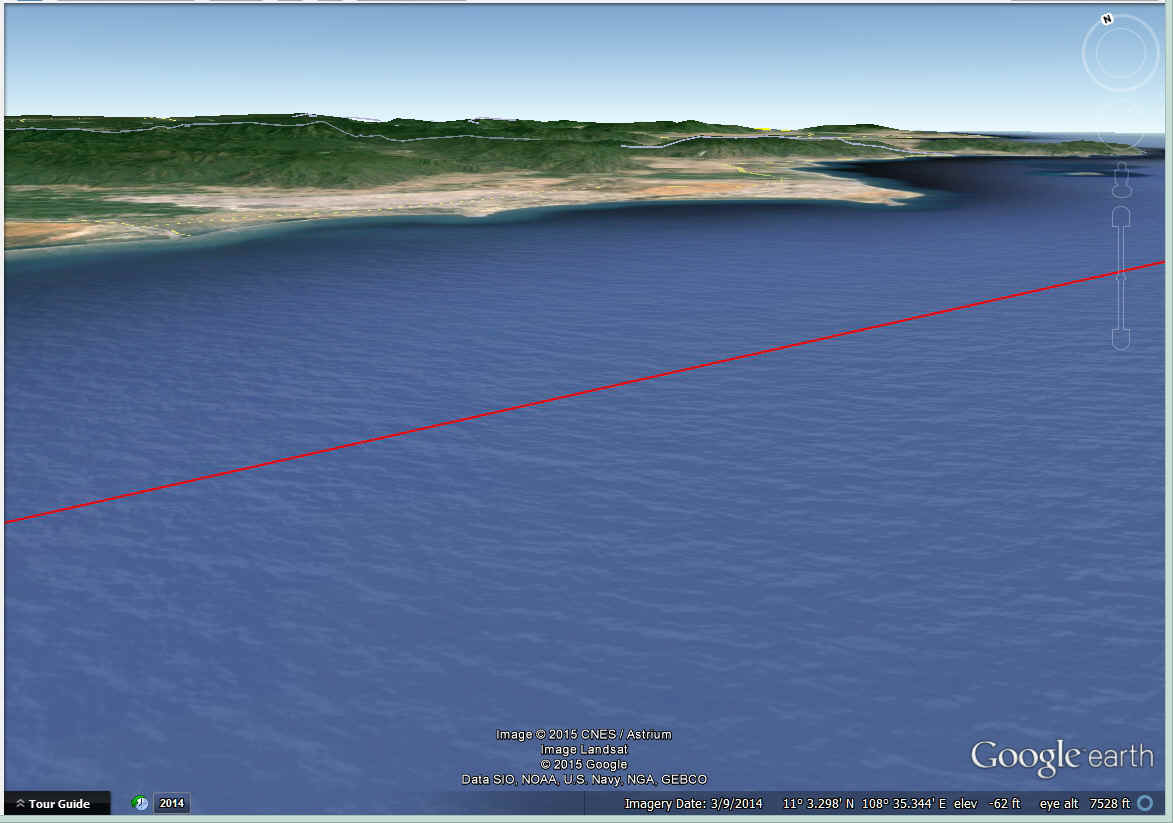
With the engine running at less than top efficiency, she started to think about how much fuel she would need to reach Manila. She had to pump all the fuel from the ferry tanks in the cabin into the right wing tank. She estimated her fuel reserve would be TWO hours, not FIVE hours. She made more calculations and decided to lower the power setting to a more efficient setting, slowing down a bit to get more miles to the gallon. I can relate to this type of flying as I do it myself in my airplane.
It was dark now, but she could not see any stars, an indication of clouds up above creating an overcast. There was no moonlight either. She felt terribly alone. She could not hear any airplanes on the VHF radios. Then she heard the audio from the NAV receiver tuned to the LUBANG VOR. That VOR is about 65 miles from Manila. An hour later she flew over the VOR station located on an island. She saw another plane heading in the right direction, so she followed it. This was the first airplane she had seen since the Blue Angel US Navy jet taking off back at Dharhan, Saudi Arabia.
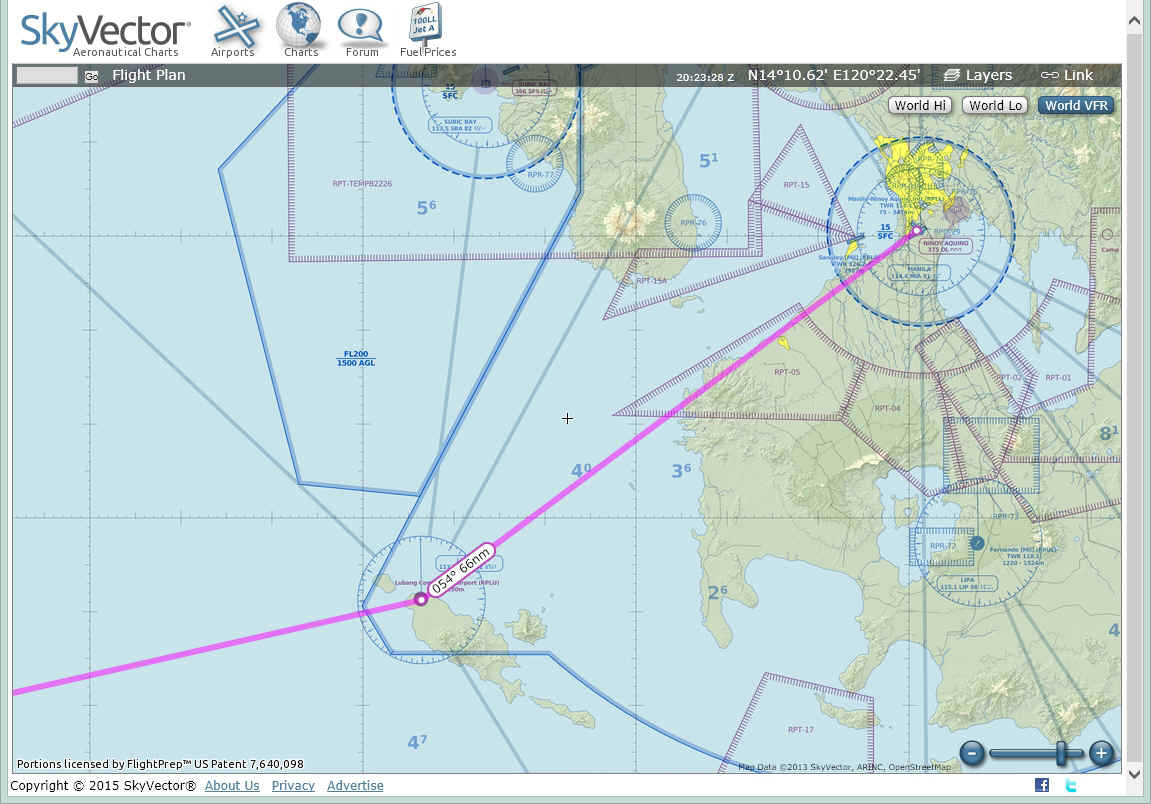
When Jerrie landed at Manila, a big crowd met her even if she was behind schedule. Press people surrounded her and started asking a lot of questions. There are more details here, too many to put in here. This is one of those times where reading her book reveals so much of her experiences in Manila.
April 9/10, 1964: These two days in Manila were used for repairs and an oil change. The internal fuel tanks had to be removed again to replace the damaged motor for the H.F. radio antenna and to service the battery. When the fuel tanks were put back, the maintenance crew put in the fuel lines wrong. There are one-way check valves in the fuel lines to keep fuel from leaking from the wing tanks above, back into the large ferry tanks. The arrows on the hoses MUST point UP. The crew had taped over the arrows on the hoses. Jerrie looked at their work, removed the tape, and pointed out the error. She was going to fix it herself, but the crew corrected their error while she was away to file her flight plan to Guam. There was also a man from our FAA to watch all the repairs being done.
Manila to Guam
April 11, 1964: This photo was taken before
departing Manila at sunrise heading for Guam. It shows the two VHF communications
antennas sticking up above the cabin and the ADF wire antenna on top from the little post
up front to the white ceramic insulator about 2 inches tall on top of the fuselage.
The black square box on the top is the second part of the antenna array feeding the ADF
receiver. There is a similar black box on the bottom of the airplane to feed the
second ADF receiver.
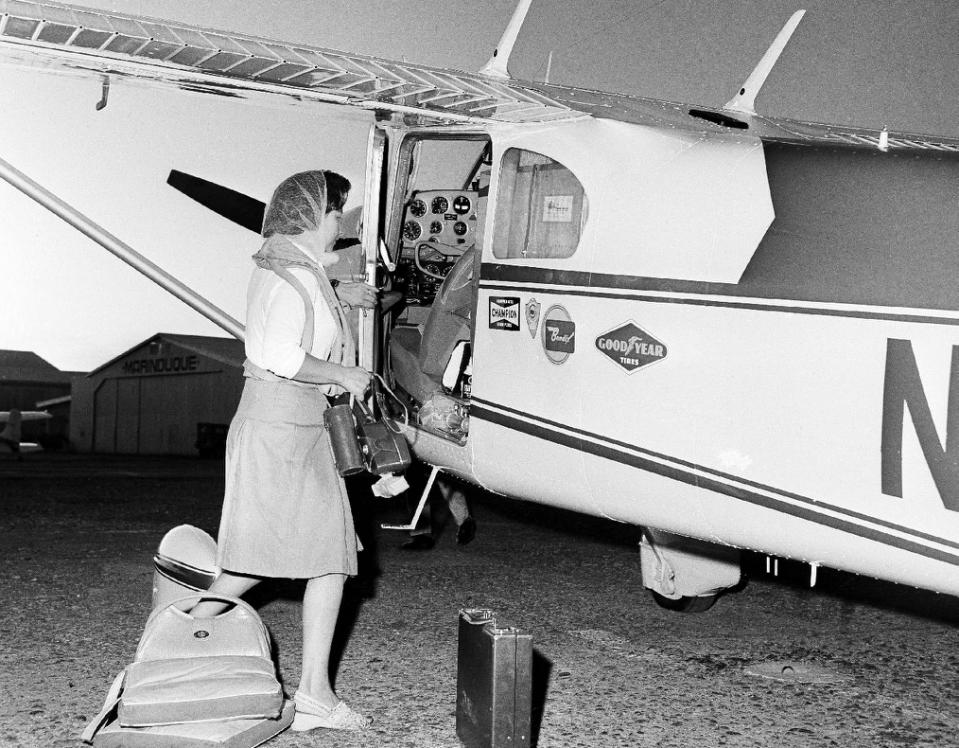
The 1,597-mile flight from Manila to Guam, was long, but easy and it would be
an arrival on American soil. The H.F. radio worked perfectly with the repaired
long-wire antenna motor fixed. The ADF receiver picked up the low-frequency beacon
at Guam from over 600 miles away. The landing at Guam was at 8:05 PM local
time. When she stopped the airplane, a US Navy band was there to greet her.
She was presented the flower Lei necklace before she could take off her life vest after
the long flight over the Pacific Ocean.
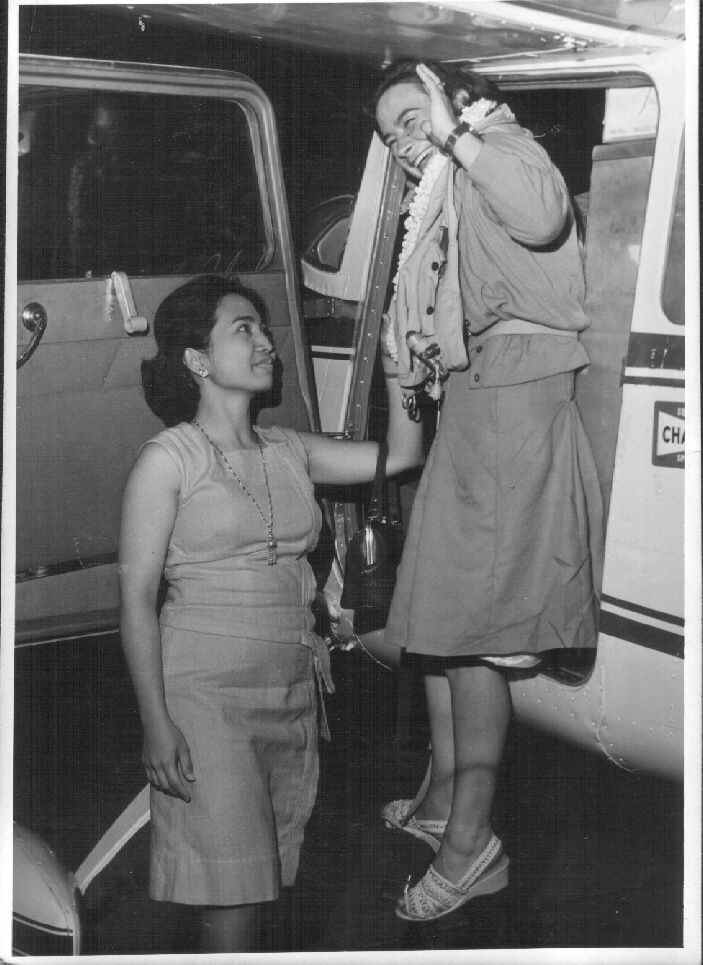
She spent the night at the Governor's residence on Guam. They had a reception party in her honor. She also visited the local television station for an interview. When she got back to the governor's mansion she took a phone call from her husband. She wanted to take a day off to have some fun, but still had to get up early for a dawn departure. She only got four hours sleep that night after flying 15 hours from Manila. She had been on Guam just over NINE hours when she departed.
| CLICK HERE for PAGE 13 | CLICK for Jerrie Mock MENU | Return to N2PRISE MAIN MENU |